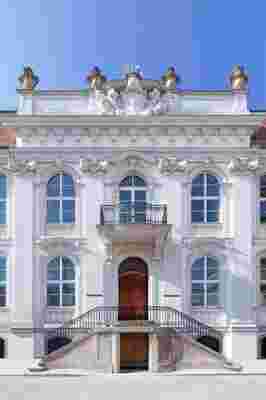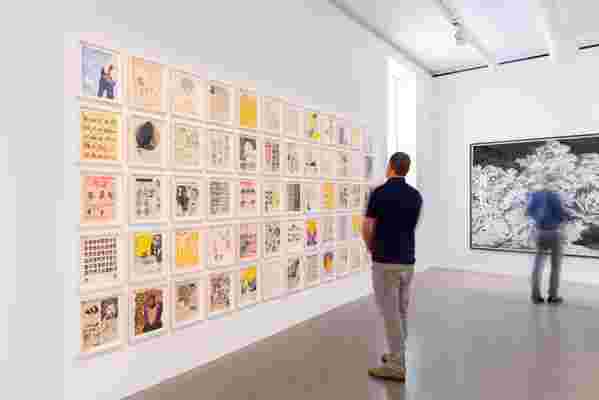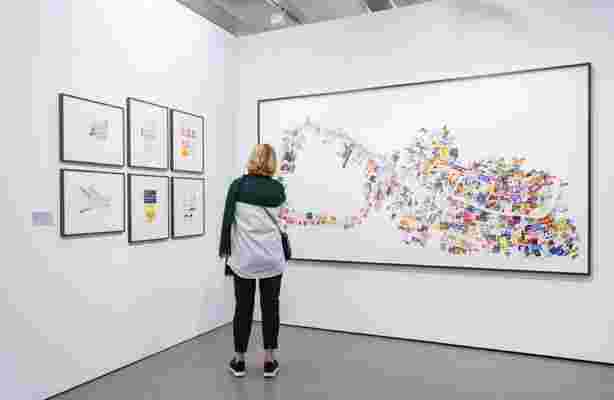Berlin’s palatial boulevard, Unter den Linden, makes for an impressive stroll—it’s lined with stately rococo and baroque buildings. Now its latest addition is a museum called the Palais Populaire, which is eager to draw crowds (hence the name). Since it recently opened, this new Deutsche Bank–funded contemporary-art museum is part of the rejuvenation of the Mitte neighborhood, which is seeing a cultural renaissance.
The museum faces a public square called Bebelplatz, which has been under renovation for seven years for the $400 million renovation of the Berlin State Opera, which just reopened. Down the street, the nearby Humboldt Forum museum will be unveiled next year after a $595 million renovation.

A look at the front of Berlin's newest museum, the Palais Populaire.
“This area will be back to the Berliners very soon,” said the Palais Populaire museum director, Svenja von Reichenbach. “It’s the next big step towards the new old Mitte, a cultural district.” The Palais Populaire is a 8,000-square-foot museum first built in the 18th century and was owned by Frederick William II of Prussia, who had his daughters live here. It was called the Prinzessin Palais (princess palace). “It was a private house, but it is now an open house,” said von Reichenbach.
Though this baroque palace was destroyed during the Second World War, it was rebuilt in the 1960s by Bauhaus architect Richard Paulick, who turned it into an upscale café, which drew celebrities like Sophia Loren and Alain Delon then closed in 2012 for renovation. On the street, the museum looks like a grand wedding cake, but inside, it strikes a resemblance to the New Museum.

The museum contains more than 8,070 square feet of exhibition space.
“We have a historical façade, but we want people to know it’s not a backwards institution,” said von Reichenbach. “We wanted to show the history of this building, but inside, we show contemporary art; the goal is to think bigger, broader, and look expansively to the future.”
The museum was redesigned by Berlin architectural firm Kuehn Malvezzi, which has added exposed concrete beams, wide open spaces, and movable walls that roll on gray concrete floors. It’s a typically industrial look for an electronic music–obsessed city like Berlin. (It could almost be considered a highbrow Berghain).

The museum is part of a rejuvenation of the neighborhood, which is seeing a cultural renaissance.
The inaugural exhibition, "The World on Paper," features 300 works on paper by 133 artists plucked from the bank’s collection of more than 50,000 artworks, including rarely seen drawings by Andy Warhol, works by color masters Katharina Grosse and Josef Albers, not to mention classics by modern masters Joan Mitchell, Bruce Nauman, and Eva Hesse. There are a few surprises in the show, like works by John Cage, as well as politically charged works by Kara Walker and Wangechi Mutu, who “use feminist questions and put their finger into the wound of racism,” said von Reichenbach.
It proves a bank museum doesn’t have to be boring and it doesn’t always have to play a predictably safe role. “We want to add something to this vibrant city, but we also want to touch on important questions in art,” said von Reichenbach. “Especially in this exhibit, the works raise questions about our current climate, our society, and that’s what we want to do.”
